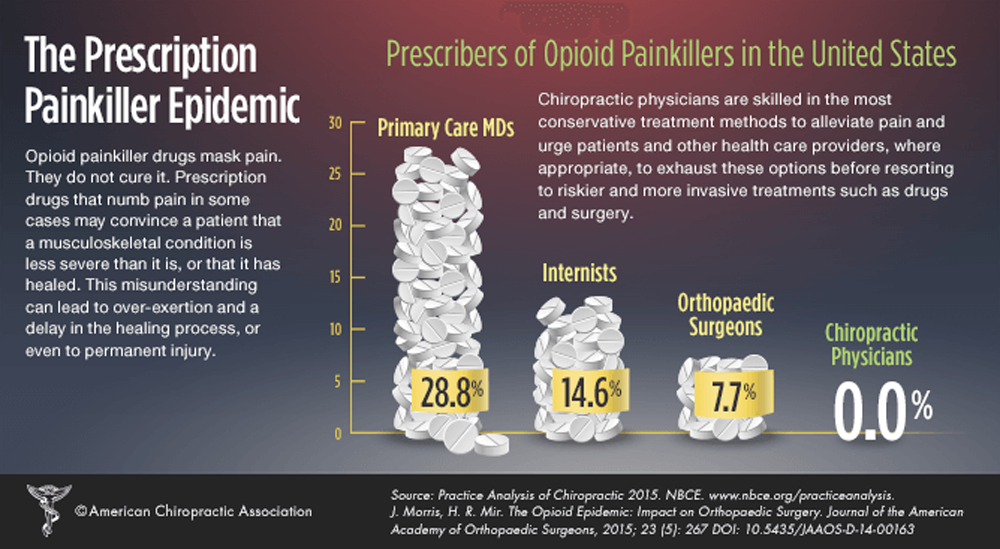Associations Between Early Chiropractic Care and Physical Therapy on Subsequent Opioid Use Among Persons With Low Back Pain in Arkansas
SOURCE: J Chiropractic Medicine 2022 (Jun); 21 (2): 67–76
Mahip Acharya, BPharm, Dvyan Chopra, MS, Allen M. Smith, PharmD, Julie M. Fritz, PhD, PT, Bradley C. Martin, PharmD, PhD
Division of Pharmaceutical Evaluation and Policy,
University of Arkansas for Medical Sciences,
Little Rock, Arkansas.
Department of Physical Therapy and Athletic Training,
University of Utah,
Salt Lake City, Utah.
Editorial Comment: These authors are to be praised for publishing this paper. When you look at their pedigrees, it’s reasonable to imagine that they may have been looking to see that physical therapy was associated with reduced opioid use. Numerous studies have shown that chiropractic already has a well-established track record for low- to no-opioid use, so they would be the perfect comparison group for a study like this. We all know that third parties are looking for safe and cost-effective alternatives to “usual care”.
In the past, a study favorable to chiropractic care, particularly one that used physical therapy as a comparison group, would never have been published, because of the long-standing medical bias against chiropractic care. So, let’s tip our hats to this group of researchers for their hard work and honesty!
Objective: The objective of this study was to estimate the association between early use of physical therapy (PT) or chiropractic care and incident opioid use and long-term opioid use in individuals with a low back pain (LBP) diagnosis.
Methods: A retrospective cohort study was conducted using data from Arkansas All Payers’ Claims Database. Adults with incident LBP diagnosed in primary care or emergency departments between July 1, 2013, and June 30, 2017, were identified. Participants were required to be opioid naïve in the 6-month baseline period and without cancer, cauda equina syndrome, osteomyelitis, lumbar fracture, and paraplegia/quadriplegia in the entire study period. PT and chiropractic treatment were documented over the ensuing 30 days starting on the date of LBP. Any opioid use and long-term opioid use (LTOU) in 1-year follow-up were assessed. Multivariable logistic regressions controlling for covariates were estimated.
There are more articles like this @ our:
Results: A total of 40,929 individuals were included in the final sample, with an average age of 41 years and 65% being women. Only 5% and 6% received PT and chiropractic service, respectively, within the first 30 days. Sixty-four percent had incident opioid use, and 4% had LTOU in the follow-up period. PT was not associated with incident opioid use (odds ratio [OR], 1.07; 95% confidence interval [CI], 0.98-1.18) or LTOU (OR, 1.19; 95% CI, 0.97-1.45). Chiropractic care decreased the odds of opioid use (OR, 0.88; 95% CI, 0.80-0.97) and LTOU (OR, 0.56; 95% CI, 0.40-0.77).
Conclusion: In this study we found that receipt of chiropractic care, though not PT, may have disrupted the need for opioids and, in particular, long-term opioid use (LTOU) in newly diagnosed LBP.
Keywords: Analgesics, Opioid; Low Back Pain; Manipulation, Chiropractic; Physical Therapy Modalities.







Leave A Comment